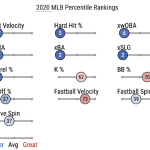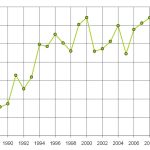Curveball and breaking ball are terms used interchangeably to describe a pitch that has a significant amount of horizontal movement. When a pitcher throws a curveball or a breaking ball, the ball spins in a way that causes it to move laterally as it approaches the batter.
This movement can be deceptive and difficult for the batter to predict, making curveballs and breaking balls effective pitches for confusing and fooling hitters. In baseball, the terms curveball and breaking ball are often used interchangeably to describe pitches with significant horizontal movement.
These pitches can deceive and confuse batters, making them difficult to hit. By understanding the differences between curveballs and breaking balls, both pitchers and batters can gain a better appreciation for these pitches and their effectiveness in the game. So, let’s dive into the nuances of these two pitch types and explore their characteristics.
Differentiating Curveball And Breaking Ball
Curveballs and breaking balls are two different types of pitches in baseball. While both have movement, the curveball typically drops downward, while a breaking ball can move in various directions. Consequently, they require different techniques to master.
Defining Curveball
A curveball is a type of breaking ball pitch commonly used in baseball. It is known for its sharp and unpredictable movement, which makes it challenging for batters to make solid contact. The primary characteristic of a curveball is the downward and lateral break it displays as it approaches the plate. This pitch is usually thrown slower than other breaking balls, allowing for a more pronounced trajectory change.
Defining Breaking Ball
Breaking ball is a broader term that encompasses multiple types of pitches, including the curveball. Breaking balls are characterized by their deviation from a straight trajectory, making them difficult for batters to anticipate and hit. The goal of a breaking ball is to disrupt the batter’s timing and induce swinging and missing or weak contact. Breaking balls can include a variety of pitch types such as curveballs, sliders, and cutters, each with its unique movement patterns and speeds.
While a curveball is a specific type of breaking ball, it is important to distinguish between the two terms. A curveball refers to a pitch with a pronounced downward and lateral break, usually thrown slower than other breaking balls. On the other hand, the term “breaking ball” encompasses a broader range of pitch types that share the common characteristic of deviating from a straight trajectory.
Here are a few key points to keep in mind when differentiating between a curveball and a breaking ball:
- Movement: A curveball has a distinct trajectory with a noticeable downward and lateral break, while other breaking balls may have different movement patterns such as a sharper lateral break (slider) or a horizontal movement (cutter).
- Speed: Curveballs are typically thrown at a slower speed to allow for a more pronounced trajectory change. Other breaking balls can be thrown at varying speeds depending on the desired movement and deception.
- Grip: The grip used for a curveball differs from other breaking balls. A traditional curveball grip involves placing the index and middle fingers along the horseshoe seam of the ball, allowing for increased topspin and downward movement.
It’s essential for pitchers and batters alike to understand the distinctions between different breaking balls to effectively strategize and respond during a game. By mastering these nuances, pitchers can exploit the weaknesses of batters, while batters can anticipate the movement and adjust their swing accordingly.

Credit: www.independent.ie
Mechanics And Grip
When it comes to pitching a devastating breaking ball, mastering the mechanics and grip is crucial. Whether it’s the elusive curveball or a variation of a breaking ball, understanding the mechanics behind each pitch is essential for any pitcher looking to fool batters and keep them off balance.
Curveball Mechanics
The mechanics of a curveball are unique and rely on a combination of arm action, wrist movement, and body positioning. To throw a curveball effectively, a pitcher must have a solid foundation and a consistent delivery. Here are the key components of the curveball mechanics:
- Starting position: The pitcher begins with the ball in their hand, gripping it with two fingers across the seams.
- Arm action: As the pitcher goes into the motion, they extend their arm back and bring it forward in a smooth and controlled arc.
- Wrist snap: At the release point, the pitcher quickly snaps their wrist downward to create topspin on the ball, forcing it to break sharply.
- Follow-through: After releasing the ball, the pitcher continues their motion, maintaining balance and stability.
The grip used for a curveball can vary slightly depending on the pitcher’s preference, but the most common grip is known as the “12-to-6” curveball grip. In this grip, the pitcher’s middle and index fingers are placed along the top of the ball, forming a “C” shape with the thumb on the underside. This grip allows for maximum control and spin, resulting in a tight and sharp break.
Breaking Ball Mechanics
While the curveball is a specific type of breaking ball, the term “breaking ball” encompasses a broader category of pitches that include sliders, cutters, and more. The general mechanics of a breaking ball are similar to that of a curveball, but there are some slight variations. Here are the key components of breaking ball mechanics:
- Starting position: Similar to the curveball, the pitcher begins with the ball in their hand, choosing a grip that suits the specific breaking ball they intend to throw.
- Arm action: As the pitcher goes into the motion, they use a similar arm action to the curveball, extending their arm back and bringing it forward in a fluid motion.
- Wrist movement: The wrist movement for a breaking ball varies depending on the pitch. For example, a slider typically involves a sideways wrist flick, while a cutter may require a slight pronation or supination of the wrist.
- Follow-through: After releasing the ball, the pitcher completes their motion with a controlled follow-through.
The specific grip used for a breaking ball depends on the type of pitch being thrown. For instance, a slider is commonly gripped with the index and middle fingers positioned securely on the seams, while a cutter grip involves placing the fingers slightly off-center on the inside of the ball. These variations in grip allow pitchers to generate different movement and deception, making it challenging for hitters to anticipate the pitch.
Pitch Movement And Speed
Pitch movement and speed are crucial elements in the art of pitching. They heavily influence a pitcher’s ability to deceive the batter and make it challenging for them to connect with the ball. When it comes to pitch movement, two terms often come up in baseball discussions: curveball and breaking ball. Both pitches feature impressive movement, but there are differences in how they move and the speed they are thrown at. In this section, we’ll explore the unique characteristics of curveballs and breaking balls concerning pitch movement and speed.
Curveball Movement
A curveball is a mesmerizing pitch that derives its name from the sharp downward curve it makes during its trajectory. This movement is primarily due to the pitcher imparting topspin on the ball while releasing it. As the ball spins, it creates air pressure differences that cause the ball to break downward, fooling hitters who anticipate a straight pitch.
Curveballs are typically thrown with a fastball arm action but at a slower speed. Pitchers aim to disrupt the batter’s timing and rhythm by stepping off the gas and forcing them to adjust to the slower pace. The sudden drop in the trajectory, combined with the reduced speed, can leave the batter swinging and missing as if they were playing a cruel game of chase.
Breaking Ball Movement
Breaking ball is an umbrella term that encompasses various pitch types, including sliders, cutters, and curveballs. While the curveball has a specific downward trajectory, other breaking balls showcase different movement patterns. For instance, sliders move laterally, while cutters exhibit a combination of downward and lateral movement.
The unique movements of breaking balls make them equally captivating and deceiving for hitters. Instead of a straight path towards the batter, these pitches veer off to one side or combine multiple directions to throw off their rhythm. The ability to manipulate the pitch’s direction allows pitchers to exploit different areas of the strike zone and challenge hitters from multiple angles.
Curveball Vs Breaking Ball Speed
There is a noticeable difference in speed between curveballs and breaking balls. Curveballs are typically thrown at a slower pace compared to other breaking balls. Pitchers emphasize accuracy and precision with curveballs rather than relying solely on raw speed.
Breaking balls, on the other hand, can vary in speed depending on the specific pitch type and the pitcher’s preference. Sliders and cutters often have more velocity than curveballs, as pitchers leverage speed to complement the movement. This increased speed adds another layer of challenge for batters, as they must not only predict the ball’s path but also adjust to the pitch’s pace.
- Curveball movement: Downward curve due to topspin
- Breaking ball movement: Varied movement, including lateral and combined
- Curveball speed: Slower pace, focusing on accuracy
- Breaking ball speed: Varies depending on pitch type, can be faster than curveballs

Credit: www.goodreads.com
Effectiveness And Strategy
In the world of baseball, the art of pitching is a delicate balance between power and finesse. Pitchers employ various types of pitches to keep the batters off balance and increase their chances of getting outs. Two popular pitch types that often leave hitters scratching their heads are the Curveball and Breaking Ball. While these pitches may seem similar at first glance, their effectiveness and strategic differences can make a world of difference on the mound.
Curveball Effectiveness
The Curveball is a pitch known for its tight downward break and slow speed. When executed correctly, this pitch can be a nightmare for hitters to track and make solid contact with. Its effectiveness lies in the deceptive movement it produces, as it appears to be heading towards the strike zone before suddenly dropping out of reach. This sudden drop not only disrupts the hitter’s timing but also makes it difficult to gauge the pitch’s location. The combination of the unpredictable movement and slower speed of the Curveball often results in swings and misses or weakly hit ground balls.
However, the Curveball’s effectiveness relies heavily on the pitcher’s ability to consistently throw it with precision. A poorly executed Curveball that fails to break effectively can become a hittable pitch, leaving the pitcher vulnerable to hard-hit balls.
Breaking Ball Effectiveness
The Breaking Ball, on the other hand, encompasses a broader category of pitches including sliders and cutters. Unlike the Curveball, the Breaking Ball typically has a sharper and more horizontal break. This lateral movement can make it challenging for hitters to square up the ball and make solid contact. The Breaking Ball’s effectiveness lies in its ability to deceive hitters by appearing as a straight pitch before abruptly changing trajectory.
Similar to the Curveball, the success of the Breaking Ball relies on the pitcher’s execution and ability to consistently locate the pitch. If a Breaking Ball hangs in the strike zone or fails to break sharply, it becomes a high-risk pitch that can result in hard-hit balls and detrimental outcomes for the pitcher.
Strategic Differences
While both the Curveball and Breaking Ball aim to disrupt the hitter’s timing and location perception, they differ in their strategic applications. The Curveball, with its downward drop, is often used as a secondary pitch to complement fastballs or changeups. Pitchers strategically throw the Curveball to keep hitters off balance and induce ground balls or swings and misses.
On the other hand, Breaking Balls offer a wider range of strategic options. Sliders, for example, can be thrown either inside or outside to left-handed or right-handed hitters respectively, fooling them into thinking the pitch will reach the strike zone but steering it out of reach at the last moment. Cutters, on the other hand, have a quick lateral break that tends to jam hitters or induce weak contact.
In conclusion, while both the Curveball and Breaking Ball serve as effective weapons in a pitcher’s arsenal, their differentiated effectiveness and strategic applications give them distinct roles on the mound. Understanding the subtle nuances of each pitch allows pitchers to exploit the weaknesses of opposing hitters and increase their chances of success.

Credit: www.kvue.com
Frequently Asked Questions On Curveball Vs. Breaking Ball
What Is The Difference Between A Curveball And A Breaking Ball?
A curveball is a specific type of breaking ball that breaks downward due to top-spin, while a breaking ball is a general term for any pitch that moves laterally or vertically.
How Do Pitchers Throw A Curveball?
Pitchers throw a curveball by using the grip that best suits them, whether it be a traditional ’12-6′ grip or a knuckle-curve grip. They then apply pressure at release to generate the desired spin, resulting in the ball breaking downward.
Are Curveballs And Breaking Balls Difficult To Hit?
Curveballs and breaking balls can be challenging to hit due to their unpredictable movement. Hitters must anticipate the break and adjust their swing accordingly, making it more difficult to make solid contact. Success against these pitches often requires practice and experience.
Conclusion
To wrap things up, understanding the key differences between a curveball and a breaking ball is vital for any pitcher. While both pitches require technique and finesse, they employ distinct movements and placements. A curveball’s deceptive drop can catch batters off-guard, while a breaking ball’s lateral movement poses a challenge.
By mastering these pitches, pitchers unlock an arsenal of tools to outwit their opponents and elevate their game to the next level. So, keep practicing, refine your skills, and leave your mark on the pitch.

General Manager & Auditorial Head.
Killian Jake is a World Sports Traveler and hobbyist sports lover. By exploring different sorts of playing modules like indoor, outdoor, and many more. As for professionalism and writing, it’s helpful to give you the right suggestions on different games and sports.





